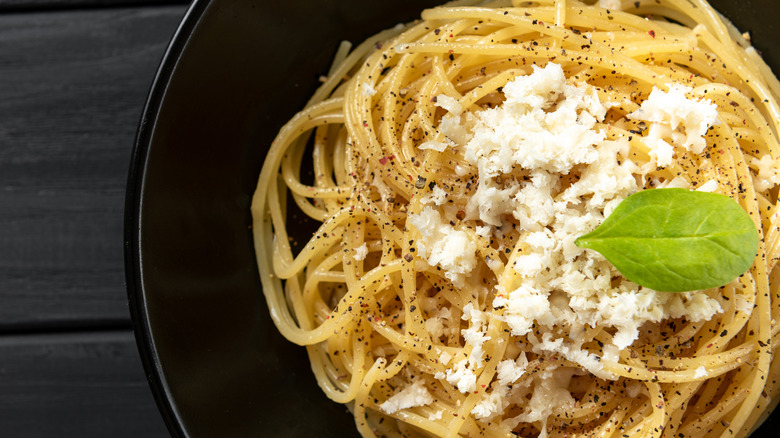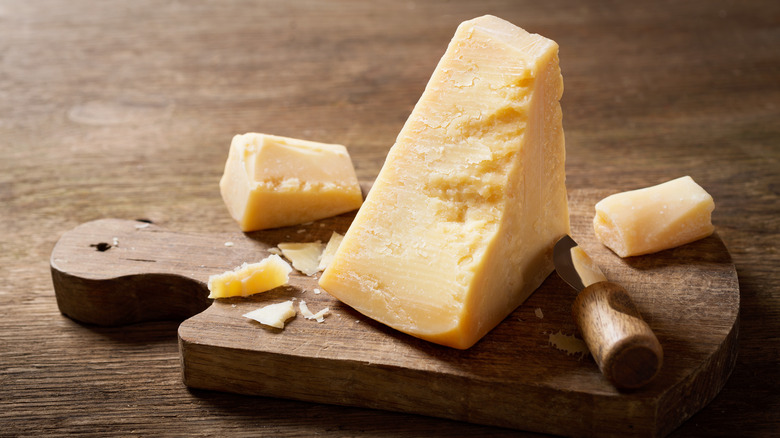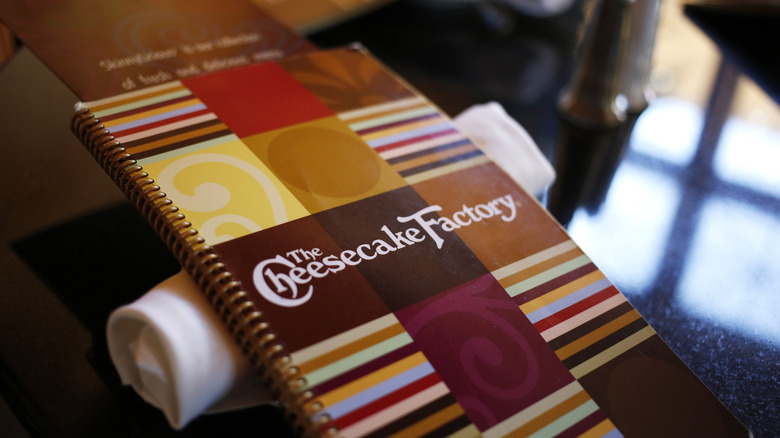The Cheesecake Factory's Cacio E Pepe Isn't The Most Traditional Take On The Dish
If you order a bowl of cacio e pepe at The Cheesecake Factory, you will not be getting a meal identical to what's traditionally served in Italy. At least the description on the chain's website is honest, calling it "Our not so traditional recipe."
Classic cacio e pepe, perfected eons ago according to some, comes down to three ingredients: pasta (typically spaghetti), pecorino cheese, and black pepper. Even the name "cacio e pepe" points to this simplicity, with cacio meaning cheese in Italian and pepe pepper.
The Cheesecake Factory version of cacio e pepe strays from the classic in a few ways. Yes, it uses spaghetti and there's plenty of black pepper in the bowl, too. But the cheese used is a blend of parmesan and romano. The restaurant also adds arugula to the mix, heightening the dish's peppery bite. Though The Cheesecake Factory's website doesn't mention it, the picture accompanying the description has several red segments in the bowl, hinting that bell pepper is involved as well.
Pecorino vs. parmesan and romano
The major difference between traditional cacio e pepe and The Cheesecake Factory version is the choice of cheese. What exactly is the difference between pecorino and parmesan and romano cheeses?
Pecorino is made from sheep's milk, while parmesan and romano are made from cow's milk. Both are also aged longer than pecorino. Parmesan has a nutty, slightly sweet flavor, while romano tends to be sharp, though it's milder than pecorino. Meanwhile, pecorino's flavor profile is grassy, tangy, and on the whole brighter than either romano or parmesan. Though all are considered hard cheeses, pecorino also tends to be softer, owing to the fact that it ages for a shorter time than parmesan or romano.
The distinction gets a bit trickier when it comes to romano, if only because it isn't uncommon to see pecorino referred to as pecorino romano, distinguishing it from pecorino made in other regions in Italy. On the whole, cheese that is solely called romano in America will be domestically-produced, made from cow's milk, and have a milder flavor than Italian pecorino. This means that The Cheesecake Factory version of cacio e pepe will also likely be milder than the traditional version.
There's nothing wrong with variation
Given how central an ingredient cheese is in cacio e pepe, it seems fair to say that the flavor of The Cheesecake Factory's version will be markedly different from the classic Italian dish, especially with added arugula and bell pepper.
That said, though The Cheesecake Factory's menu has changed a lot over the years, it has never really been known for its authenticity. Furthermore, while plenty of chefs are protective over the traditional way to do things, there are ultimately no rules saying that certain dishes can only be done a certain way. The Cheesecake Factory is far from alone when it comes to toying with classic dishes.
Cacio e pepe is both heavy and rich. Adding some vegetables that can lighten it up is, for some diners, a welcome change. Other recipes add some veggies as well. Still others go in the opposite direction, leaning further into indulgence by adding pancetta. If nobody ever thought to venture outside traditions, then new traditions would never get made.


